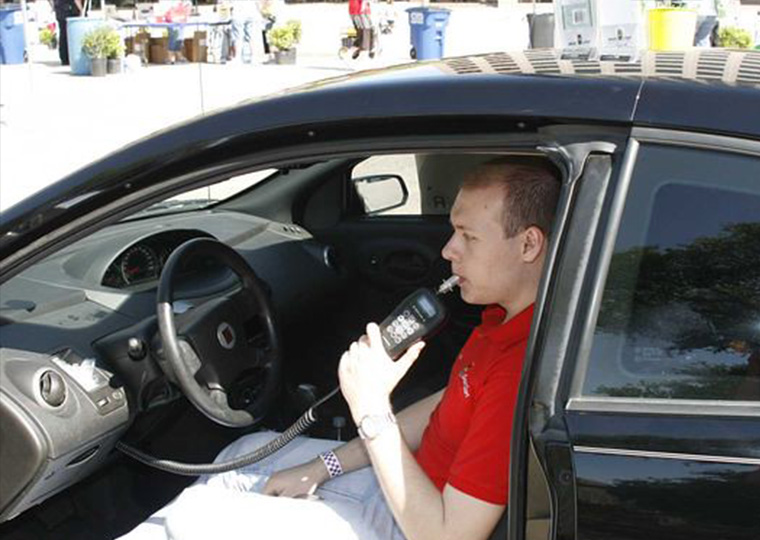We literally feel closer to someone we’re hearing via headphones
Whether it’s an NPR fundraising pitch, online training at work, a Coursera online class or an advertisement embedded in a podcast, stakeholders in those media have a singular focus on developing content they hope will resonate with the listener.
They should also hope those listeners are using headphones rather than speakers.
Opt In to the Review Monthly Email Update.
Research forthcoming in Organizational Behavior and Human Decision Processes finds that when audio is experienced via headphones we seem to process it as a voice from within our head, compared with the external experience of audio delivered by speaker.
UCLA Anderson’s Alicea Lieberman, University of California-Berkeley’s Juliana Schroeder and University of California-San Diego’s On Amir find that the in-the-head experience of headphones creates a stronger bond between listener and communicator.
“Listening to a message in headphones (versus speakers) increases feelings of closeness to the communicator — and consequently impacts listeners’ judgments of and behavior towards the communicator,” the researchers explain.
Feeling a Connection
Their findings extend psychological research that shows people with more physical and social proximity report greater connectedness. In this instance, voices we process as coming from inside our head seem to create that sense of intimate spatial and social proximity, a phenomenon the researchers refer to as “felt closeness.”
They conducted five experiments, which collectively involved nearly 4,000 participants. Across all the studies, the researchers included the same 2-question query to gauge “felt closeness.”
On a scale of 1 (not at all) to 7 (very) participants were asked to express the extent to which they felt the person they listened to felt physically near, and then the extent to which they felt a sense of distance between themselves and the person they heard.
Consistently across all studies, people who heard a message through headphones reported higher levels of proximity/less distance, than participants who heard the same message through a speaker.
One experiment asked participants to estimate their sense of felt closeness after listening to a three-minute audio clip of a woman describing her experience with COVID-19.
Those who listened with headphones reported perceiving the communicator as significantly closer — both physically and socially compared with those who listened through a speaker. In the same experiment, headphone-wearing participants reported a higher sense of familiarity with the communicator (4.15 score on average) than speaker participants (3.77).
Head(phone) Games
The researchers further explored “felt closeness” by exploiting a headphone technology known as 8D audio, which attempts to create a surround sound effect akin to being in a concert hall, the opposite of in your head.
The researchers had a fresh batch of 900 participants listen to a different audio clip, in which a mother and daughter discussed their experience being homeless. Their theory held up here too: Participants who listened via regular headphone audio technology reported a higher sense of felt-closeness not only compared with those who listened via speakers but also compared with 8D listeners.
Nearly 700 participants were asked to listen to an audio clip adapted from a U.S. Department of Transportation public service announcement in which a woman described driving home from her college graduation when a driver using a cellphone ran a red light, hit her car, critically injuring her and killing both her parents.
As part of this study (and another one) those who listened with headphones had a higher sense of empathy toward the woman they listened to.
Felt closeness may also have a spillover effect of intensifying opinions.
Participants were asked on a scale of 1 (much less than 50 deaths) to 5 (much more than 50 deaths) how many deaths from cellphone related crashes they thought occurred each week. Those who listened via headphones gave a significantly higher average score of 4.09 compared with the speaker group (3.93). Embedded in those results is that 45% of the headphone group chose the most extreme rating of 5, compared with 37% of the speaker group.
An Earful of Persuasion
A more intimate hearing experience also seems to be a catalyst for encouraging people to take action.
A field experiment corralled more than 225 passersby at an outdoor booth and asked them if they would listen to a clip from a b-school podcast on an iPad the research assistants working the booth provided. Some were given headphones to listen, others relied on the tablet’s speaker. Participants had no clue that the focus was on how they listened. They presumed they were there to provide podcast feedback.
After listening to the clip, about 30% of the headphone group agreed to write a nomination for the podcast guest to receive a university award, compared with 14% of the speaker group, and 18% of the headphone listeners signed up to get a subscription link to the podcast, compared with 11% of those who listened via the iPad’s speaker.
“Given the ever-increasing rate of auditory messages — and virtual communication more broadly — it is important to understand how the medium through which people listen can affect their perceptions, attitudes and behaviors,” the researchers conclude.
Featured Faculty
-
Alicea Lieberman
Assistant Professor of Marketing
About the Research
Lieberman, A., Schroeder, J. & Amir, O. (in press). A Voice Inside my Head: The Psychological Consequences of Auditory Technologies. Organizational Behavior and Human Decision Processes.






